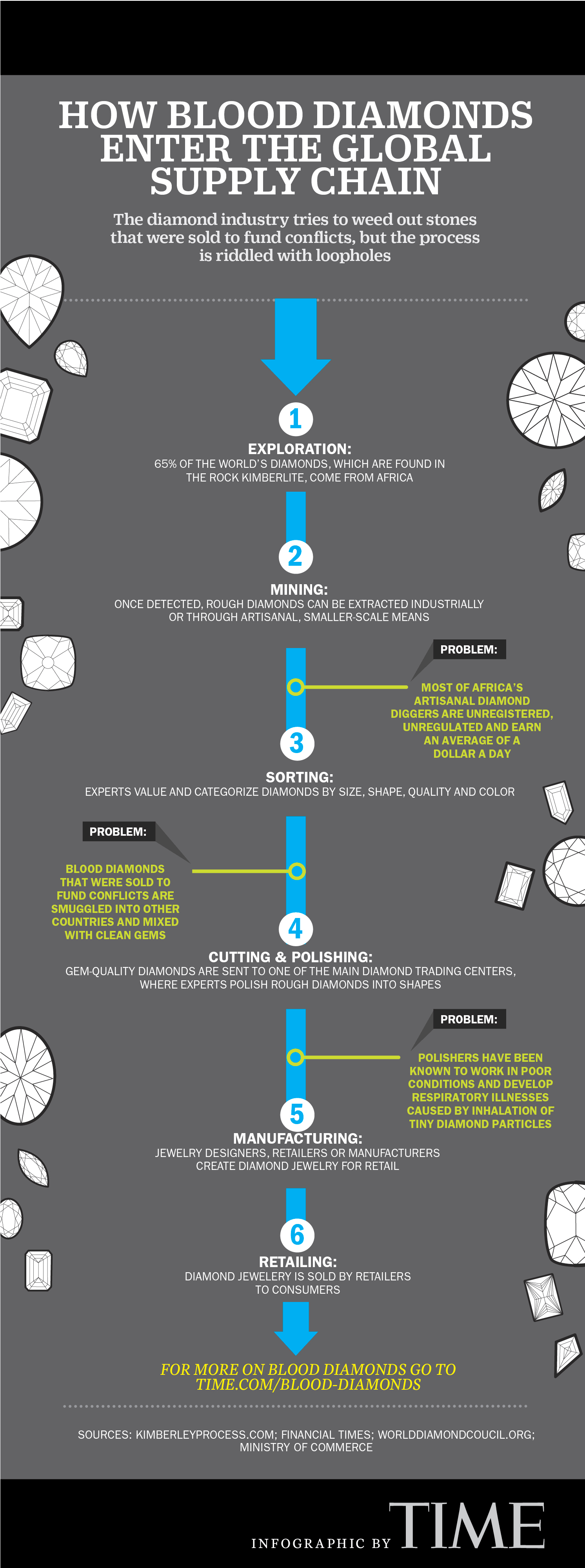The diamond industry created the Kimberley Process in 2003 to reassure consumers that their gemstones had not been used to finance conflicts.
But while the Kimberley Process removed some conflict diamonds from the market, many still slip through loopholes along the supply chain, as detailed in the TIME article Blood Diamonds. Another problem is that the Kimberley Process’ narrow definition of “conflict diamond” does not include some of the practices in diamond mining and sale that consumers find troubling, including environmental degradation, child labor, worker exploitation and state-sanctioned violence. That allows for unethically sourced gems to end up in stores in the U.S.
This graphic shows how conflict diamonds can easily become part of the global supply chain:

Read Next: TIME’s Report on Blood Diamonds
More Must-Reads from TIME
- Why Biden Dropped Out
- Ukraine’s Plan to Survive Trump
- The Rise of a New Kind of Parenting Guru
- The Chaos and Commotion of the RNC in Photos
- Why We All Have a Stake in Twisters’ Success
- 8 Eating Habits That Actually Improve Your Sleep
- Welcome to the Noah Lyles Olympics
- Get Our Paris Olympics Newsletter in Your Inbox
Contact us at letters@time.com